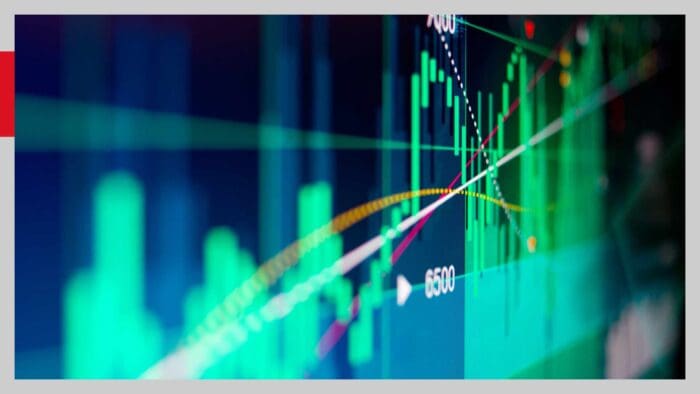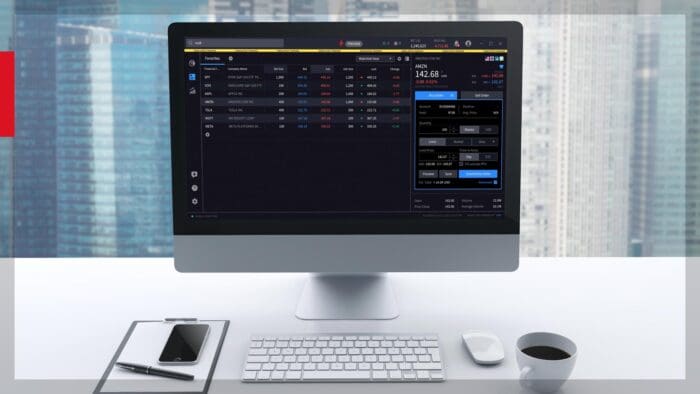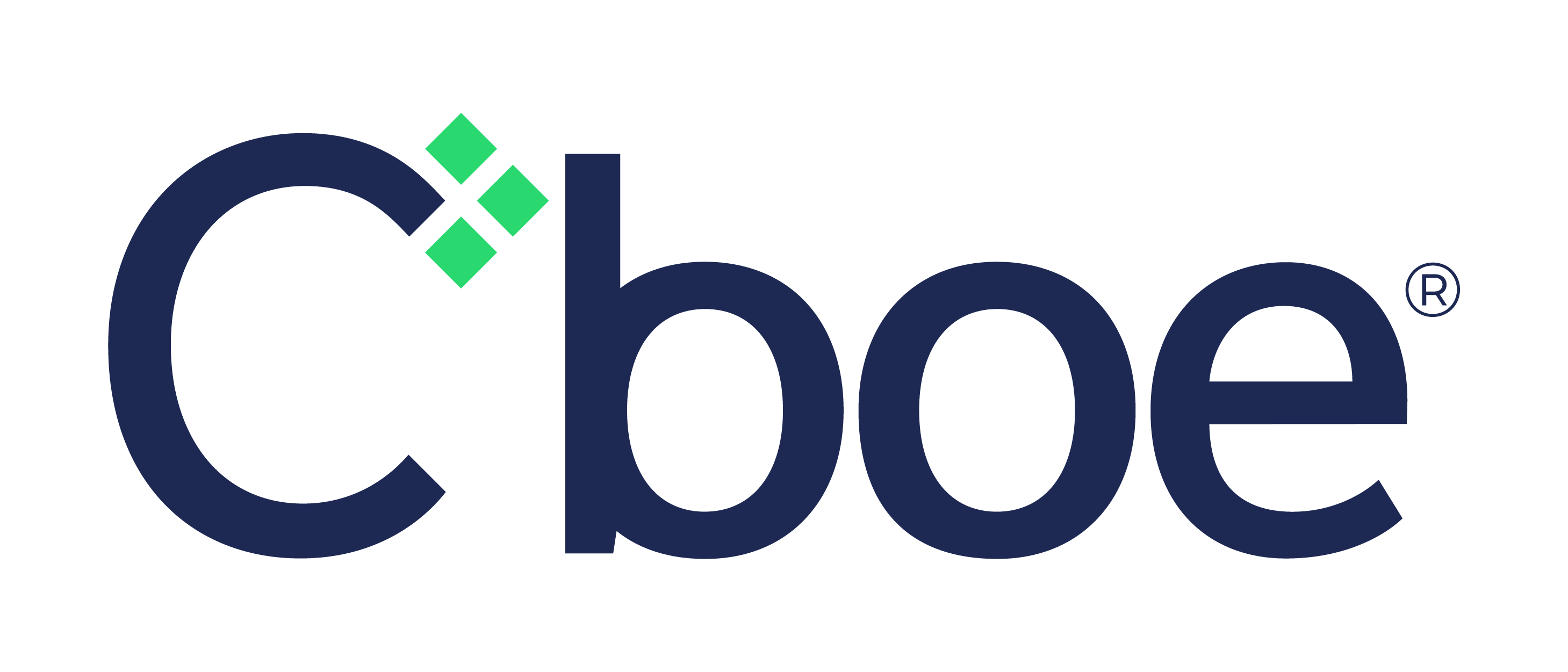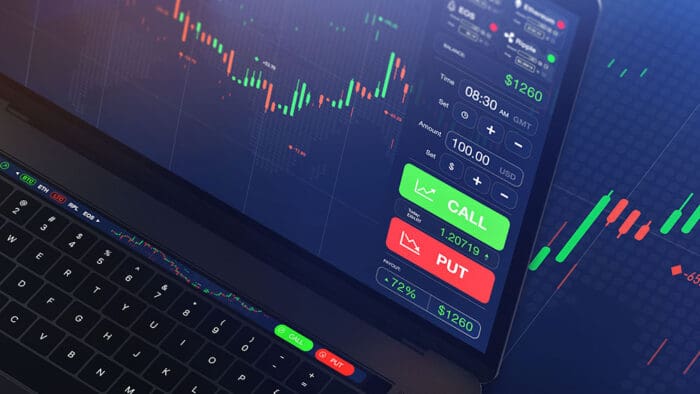As Trump’s second act begins, the markets are already feeling the heat—from trade flare-ups to tech tremors. Kevin Davitt breaks down what the data says about volatility, risk, and whether Wall Street can stomach another round.
AUDIO PLACEHOLDER
Summary – IBKR Podcasts Ep. 252
The following is a summary of a live audio recording and may contain errors in spelling or grammar. Although IBKR has edited for clarity no material changes have been made.
Andrew Wilkinson
Welcome to this midweek look at markets, and let’s get straight into it. I’m pleased to have back on this segment Kevin Davitt, Head of Index Options at Nasdaq. Welcome, Kevin.
Kevin Davitt
Andrew, thank you very much for having me back.
Andrew Wilkinson
Always a pleasure. Now listen, for the sake of timing, we’re recording Wednesday, April the 30th, 2025, the day on which the first quarter U.S. GDP delivered a negative print. Kevin, at the same time China said that its latest export data took a swan dive. What is your takeaway from the perspective of the market on President Trump’s first 100 days, Kevin?
Kevin Davitt
Ooh, we’re gonna start out with a hot button issue, aren’t we? That’s fun. A question like that—I think in terms of kind of a Family Feud approach—and the term in my head is “uncertainty.” Now, I know that’s a word that gets thrown around all the time, but it’s also a term that’s like “volatility” in the sense that it’s always there. The degree of uncertainty ebbs and flows.
Big picture, I think we have uncertainty about the ability of AI-focused firms to monetize investments and justify multiples, uncertainty around something like GDP or the monthly jobs report (which we’ll get on Friday). But there is elevated global economic uncertainty right now, staying away from the political side. I think these new uncertainties are arguably broader, and they’re deeper than anything in recent memory.
As I tend to see the world through the lens of index options—and that world creates a ton of data that’s rich with information about forward-looking uncertainty—if we think through the lens of one-month forward volatility measures like the VIX Index or like VXN, they both made one of the most significant jumps in a very short timeframe back in early April.
In terms of impact, let’s think about the implications for an annualized volatility measure moving from 16 in the case of VIX and about 20 in the VXN instance in late March, to both measures right around 60 a couple of days later. Interpreting that, the market went from expecting an up/down range of 20% in the Nasdaq 100 per annum to an up/down range of 60%. My sort of rhetorical question would be: How do you plan for the future in that type of environment?
Now, it’s come back in more recently, but in short, I think uncertainty has taken on a new dimension in 2025 over the past three months. Perhaps it’s navigated well, but I think it remains a slipperier backdrop than the one we have seen for many years.
Andrew Wilkinson
Yeah. Unlike the Great Financial Crisis back in ’07–’08, this one feels somewhat brought upon ourselves rather than as the result of a liquidity bubble. So it’s a very different backdrop.
Kevin, in your space—the technology space, which is what the Nasdaq is known for—there are four of the seven Magnificent Seven companies reporting earnings this week. What are you looking for in terms of narrative from the companies?
Kevin Davitt
Oh, that’s a good one too. Tech is most certainly in the spotlight this week—and I think generally over the past handful of years, as you alluded. We’re gonna get reports from Microsoft and Meta today (we’re recording on Wednesday), Amazon and Apple on Thursday. That’s roughly 30% of the Nasdaq 100 in terms of weighting.
Just to be fair, I’m not a fundamental analyst, and I know that in terms of market cap influence, this matters.
Now, quick side note on the expected ranges: so again, thinking through the information embedded in options—they’re all essentially, those four names are essentially in line with the typical straddle value in percent terms when you look back at the last eight reporting periods, except for Apple, which is pricing in more vol than it has historically—which I think makes some sense.
So let’s talk about that narrative. As your audience likely knows, the Apple supply chain is largely run through China, so their expectations and the narrative with respect to tariffs is gonna matter. I think Apple has the ability to lobby Congress and the White House. They have shown that historically. There have already been concessions for electronics.
But going back to that “uncertainty” term, that longer-term outlook is muddier for companies like them. So I’m curious how frequently the word “tariff” comes up in reports, and how comfortable these big mega-cap tech firms are about giving guidance about forward earnings against the current backdrop.
Andrew Wilkinson
Yeah, many have just given up that game and said, “We’re not gonna give any forward guidance. We’re just not gonna do it because we just can’t tell what the future brings at this point.”
So now you can debate it: is it on, is it off—the “Sell America” trade, despite last week’s rally, seems still to be intact. What are institutions telling you? What are the tea leaves that you are reading, Kevin, within the index options market as far as how institutions are positioning?
Kevin Davitt
Somehow that question seems more appropriate coming with a British accent.
It is a good question, because that has kind of been a broader theme throughout the year, even before the most recent volatility. So let’s talk about that from an asset perspective. On the data that I’ve seen, the outflows in many of the big ETF products designed to track major U.S. equity benchmarks—like the Qs, like SPY, and IWM—those outflows have largely been from overseas, and Europe in particular.
So that bolsters your narrative about the “sell U.S.,” but it’s less seemingly domestic-based than international.
Now, as regular market watchers likely know, international equity indices have underperformed U.S. benchmarks for a long time. The ratio of performance is historically very skewed, and it’s been in favor of the U.S. for a decade plus, so perhaps it stands to reason that Europe and some other international markets would outperform.
From my perspective, I think the tendency to infer too much from specific option flows—which is the way your question was framed—can be overblown. Now just to be fair, when you see volume swell in a particular area of the market, that can be telling, and we saw that earlier this month. But extrapolating too much from any given option trade or structure, I think, is generally a misled endeavor.
I believe that because there’s absolutely no way that you or I—or anyone besides the person managing that risk—sees the whole picture. You don’t know what type of underlying exposure exists, what type of other derivative risks or hedges exist. It’s super incomplete information, and that can give rise to, I think, questionable interpretations.
Now, flip side there—we saw index options volume balloon earlier this month following that tariff news. From a big broad perspective, that’s instructive. I think that’s been the case since interest rates started to normalize a few years ago. The value of large notional products like NDX, with broad-based exposure to a diverse group of names in a single ticker—I think those are critical for risk management at an institutional and at an individual level.
I’ve said this before, but I think broadly, portfolios look more like the Nasdaq 100 construction compared to the S&Ps or small caps. So risk offsets and exposure management is increasingly Nasdaq 100-focused, which excites me.
Big picture, I think that less the sort of “sell U.S., buy global” has been to manage prudently. And for those looking longer-term—again, I know many Interactive Brokers clients are active and thinking about the here and now—there are interesting dynamics going on in index skew: the relationship between upside and downside risk. That could lend itself to interesting expressions further out in time.
And this is me saying: looking at big, broad moves through the lens of the overall term structure and shifts in things like volatility and skew—I think that can be insightful. But trying to take too much away from any given option trade or couple trades—I don’t think that lends itself to a whole lot of edge.
Andrew Wilkinson
Fascinating insight. Thank you very much, Kevin Davitt, Head of Index Options at the Nasdaq.
Kevin Davitt
Thanks for having me, Andrew.
Andrew Wilkinson
You are welcome. And to the audience—don’t forget—remember to subscribe wherever you download your podcasts from. Bye for now.
Disclosure: Interactive Brokers
The analysis in this material is provided for information only and is not and should not be construed as an offer to sell or the solicitation of an offer to buy any security. To the extent that this material discusses general market activity, industry or sector trends or other broad-based economic or political conditions, it should not be construed as research or investment advice. To the extent that it includes references to specific securities, commodities, currencies, or other instruments, those references do not constitute a recommendation by IBKR to buy, sell or hold such investments. This material does not and is not intended to take into account the particular financial conditions, investment objectives or requirements of individual customers. Before acting on this material, you should consider whether it is suitable for your particular circumstances and, as necessary, seek professional advice.
The views and opinions expressed herein are those of the author and do not necessarily reflect the views of Interactive Brokers, its affiliates, or its employees.
Disclosure: Nasdaq
Index
Nasdaq® is a registered trademark of Nasdaq, Inc. The information contained above is provided for informational and educational purposes only, and nothing contained herein should be construed as investment advice, either on behalf of a particular security or an overall investment strategy. Neither Nasdaq, Inc. nor any of its affiliates makes any recommendation to buy or sell any security or any representation about the financial condition of any company. Statements regarding Nasdaq-listed companies or Nasdaq proprietary indexes are not guarantees of future performance. Actual results may differ materially from those expressed or implied. Past performance is not indicative of future results. Investors should undertake their own due diligence and carefully evaluate companies before investing. ADVICE FROM A SECURITIES PROFESSIONAL IS STRONGLY ADVISED.
© 2023. Nasdaq, Inc. All Rights Reserved.
Options
For the sake of simplicity, the examples included do not take into consideration commissions and other transaction fees, tax considerations, or margin requirements, which are factors that may significantly affect the economic consequences of a given strategy. An investor should review transaction costs, margin requirements and tax considerations with a broker and tax advisor before entering into any options strategy.
Options involve risk and are not suitable for everyone. Prior to buying or selling an option, a person must receive a copy of Characteristics and Risks of Standardized Options. Copies may be obtained from your broker, one of the exchanges or The Options Clearing Corporation, One North Wacker Drive, Suite 500, Chicago, IL 60606 or call 1-888-OPTIONS or visit www.888options.com.
Any strategies discussed, including examples using actual securities and price data, are strictly for illustrative and education purposes and are not to be construed as an endorsement, recommendation or solicitation to buy or sell securities.
© 2023. Nasdaq, Inc. All Rights Reserved.
Disclosure: Options Trading
Options involve risk and are not suitable for all investors. For information on the uses and risks of options read the "Characteristics and Risks of Standardized Options" also known as the options disclosure document (ODD). Multiple leg strategies, including spreads, will incur multiple transaction costs.
Disclosure: ETFs
Any discussion or mention of an ETF is not to be construed as recommendation, promotion or solicitation. All investors should review and consider associated investment risks, charges and expenses of the investment company or fund prior to investing. Before acting on this material, you should consider whether it is suitable for your particular circumstances and, as necessary, seek professional advice.













Join The Conversation
If you have a general question, it may already be covered in our FAQs page. go to: IBKR Ireland FAQs or IBKR U.K. FAQs. If you have an account-specific question or concern, please reach out to Client Services: IBKR Ireland or IBKR U.K..
Visit IBKR U.K. Open an IBKR U.K. Account